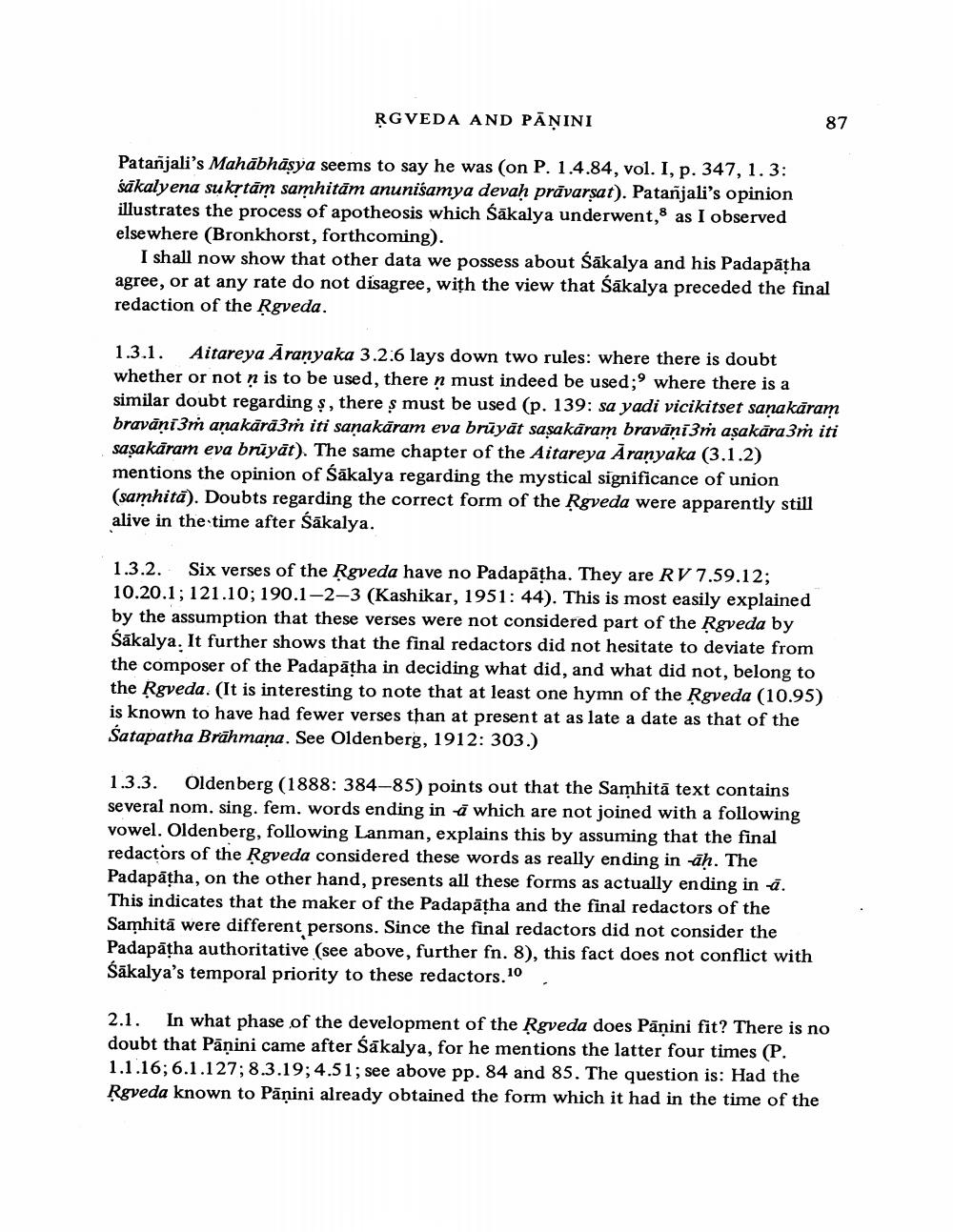________________
RGVEDA AND PĀNINI
87
Patanjali's Mahābhāsya seems to say he was (on P. 1.4.84, vol. I, p. 347, 1.3: śākalyena sukrtām samhitām anunišamya devah prāvarsat). Patañjali's opinion illustrates the process of apotheosis which Śākalya underwent,8 as I observed elsewhere (Bronkhorst, forthcoming).
I shall now show that other data we possess about Sākalya and his Padapātha agree, or at any rate do not disagree, with the view that Śākalya preceded the final redaction of the Rgveda.
1.3.1. Aitareya Āranyaka 3.2.6 lays down two rules: where there is doubt whether or not ņ is to be used, there ņ must indeed be used;' where there is a similar doubt regarding ș, there s must be used (p. 139: sa yadi vicikitset saņakāram bravāniṁ anakārā3ṁ iti sanakāram eva brūyāt sasakāram bravāņi3ṁ aşakāra 3ṁ iti sasakāram eva brūyāt). The same chapter of the Aitareya Aranyaka (3.1.2) mentions the opinion of Sākalya regarding the mystical significance of union (samhitā). Doubts regarding the correct form of the Rgveda were apparently still alive in the time after Sākalya.
1.3.2. Six verses of the Rgveda have no Padapātha. They are RV 7.59.12; 10.20.1; 121.10; 190.1–2–3 (Kashikar, 1951: 44). This is most easily explained by the assumption that these verses were not considered part of the Rgveda by Śākalya. It further shows that the final redactors did not hesitate to deviate from the composer of the Padapātha in deciding what did, and what did not, belong to the Rgveda. (It is interesting to note that at least one hymn of the Rgveda (10.95) is known to have had fewer verses than at present at as late a date as that of the Śatapatha Brāhmana. See Oldenberg, 1912: 303.)
1.3.3. Oldenberg (1888: 384-85) points out that the Samhitā text contains several nom. sing. fem. words ending in a which are not joined with a following vowel. Oldenberg, following Lanman, explains this by assuming that the final redactors of the Rgveda considered these words as really ending in āh. The Padapātha, on the other hand, presents all these forms as actually ending in a. This indicates that the maker of the Padapātha and the final redactors of the Samhitā were different persons. Since the final redactors did not consider the Padapātha authoritative (see above, further fn. 8), this fact does not conflict with Sākalya's temporal priority to these redactors.10 .
2.1. In what phase of the development of the Rgveda does Pāṇini fit? There is no doubt that Pāṇini came after Śākalya, for he mentions the latter four times (P. 1.1.16; 6.1.127; 8.3.19; 4.51; see above pp. 84 and 85. The question is: Had the Rgveda known to Pāņini already obtained the form which it had in the time of the




